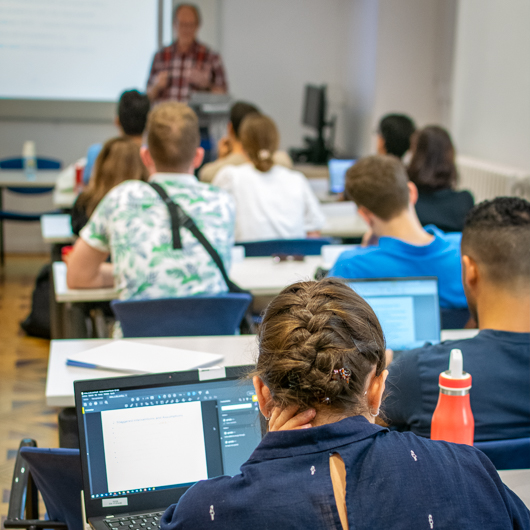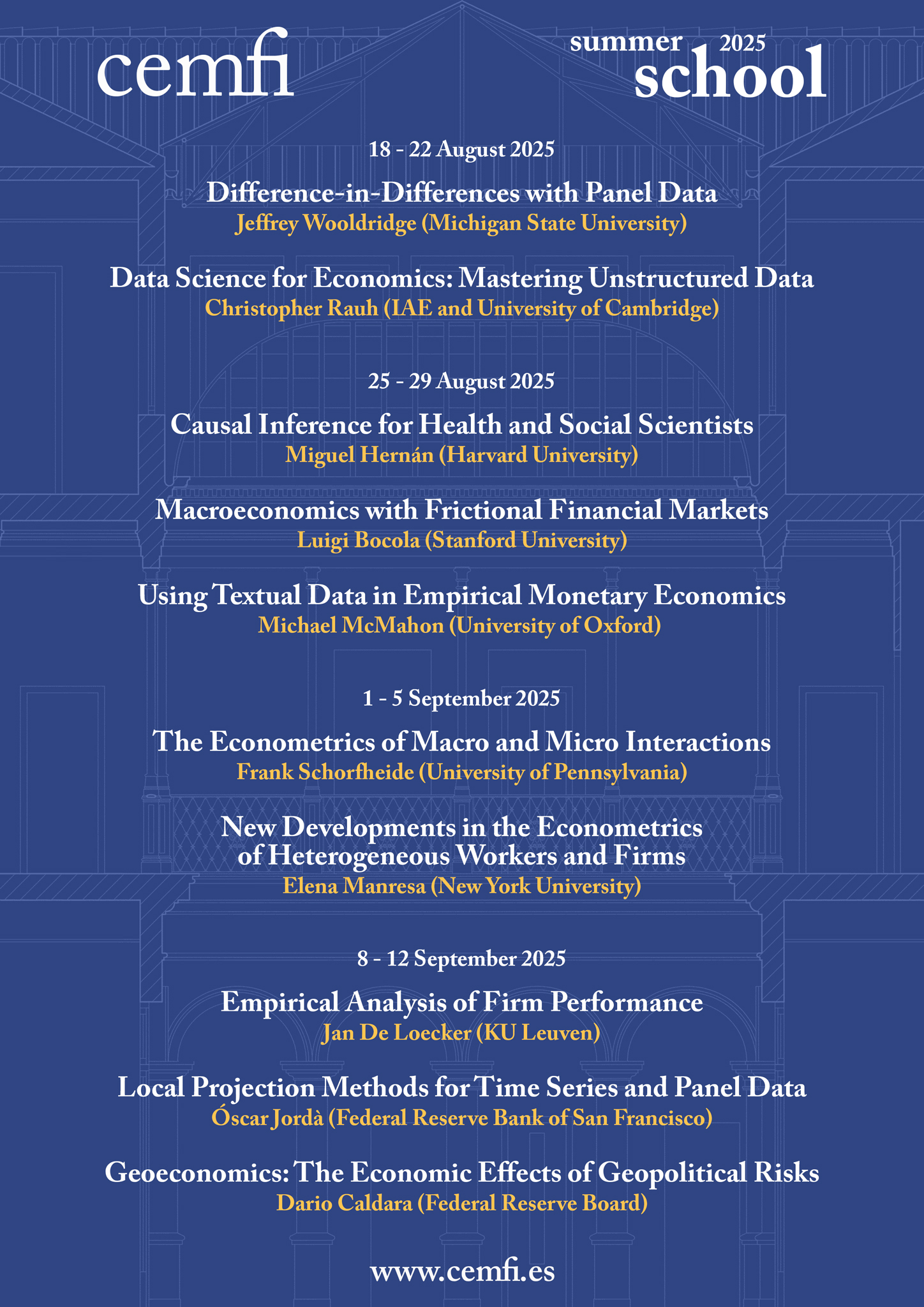CEMFI Summer School
The CEMFI Summer School aims to provide practitioners and academics from all over the world with an opportunity to update their training in fields within CEMFI's range of expertise.
A variety of one-week courses are offered each year, during late August and early September.
The courses are taught by leaders in their fields. They are based on innovative teaching practices that combine regular lectures and personalized interaction between the instructor and course participants. Courses typically combine formal lectures, discussion sessions and, in some cases, workshop sessions where some participants can discuss their work. In more applied courses, practical classes outside the regular schedule are organized to provide additional hands-on experience. A course manager is assigned to each course to coordinate all activities.
Each course has between 10 and 36 participants. It consists of five daily sessions that lasts three and a half hours, including a 30-minute break, and can take place either in the morning or in the afternoon. In the evening of the second day of each course, the School organizes a course dinner aimed at providing participants and instructors with an occasion to interact in a relaxed atmosphere.



